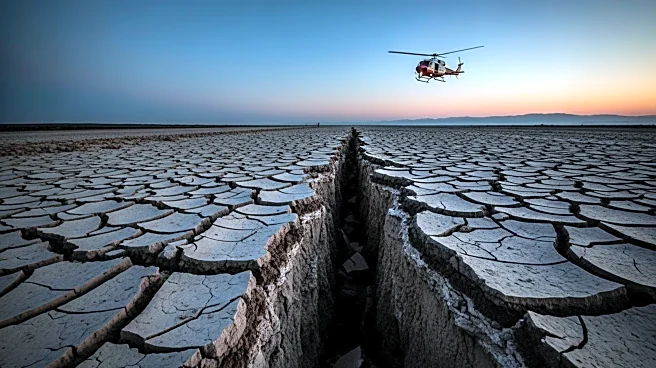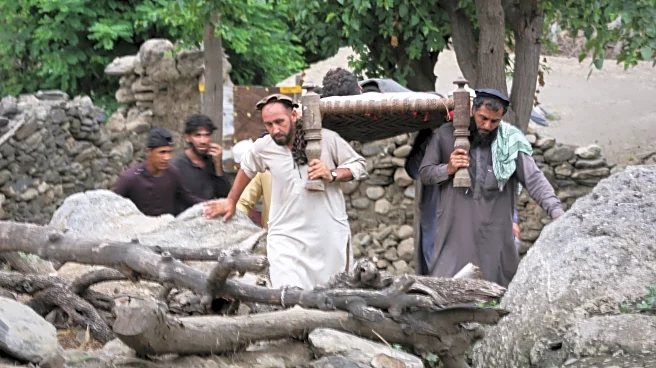What's Happening?
The death toll from a 6.0-magnitude earthquake in Afghanistan has risen to over 1,400, with more than 3,000 injured. The earthquake struck near the Pakistan border, affecting villages in Kunar and Nangarhar provinces. Rescue operations are ongoing, with emergency responders struggling to reach remote areas due to damaged infrastructure. The earthquake destroyed approximately 8,000 homes, leaving many without shelter. The Taliban government is coordinating rescue efforts and has appealed for international assistance. The earthquake is part of a series of recent seismic events in the region, highlighting the area's geological vulnerability.
Why It's Important?
This disaster exacerbates Afghanistan's existing humanitarian crisis, compounded by political instability and economic challenges. The Taliban's appeal for international aid highlights the complexities of providing assistance in a country with limited international recognition. The earthquake's impact on infrastructure and housing underscores the need for improved disaster preparedness and response strategies. The international community's response will be pivotal in addressing immediate humanitarian needs and may influence future diplomatic relations with Afghanistan. The situation also raises questions about the capacity of the Taliban government to manage large-scale disaster relief efforts effectively.
What's Next?
Rescue and relief operations will continue as authorities work to reach isolated communities and provide essential aid. The international community's engagement will be critical in supporting recovery efforts. The disaster may prompt discussions on enhancing Afghanistan's infrastructure resilience and disaster management capabilities. The Taliban's handling of aid distribution will be scrutinized, potentially affecting future international cooperation. Long-term, the earthquake could influence geopolitical dynamics, particularly in terms of international recognition and support for the Taliban government.












